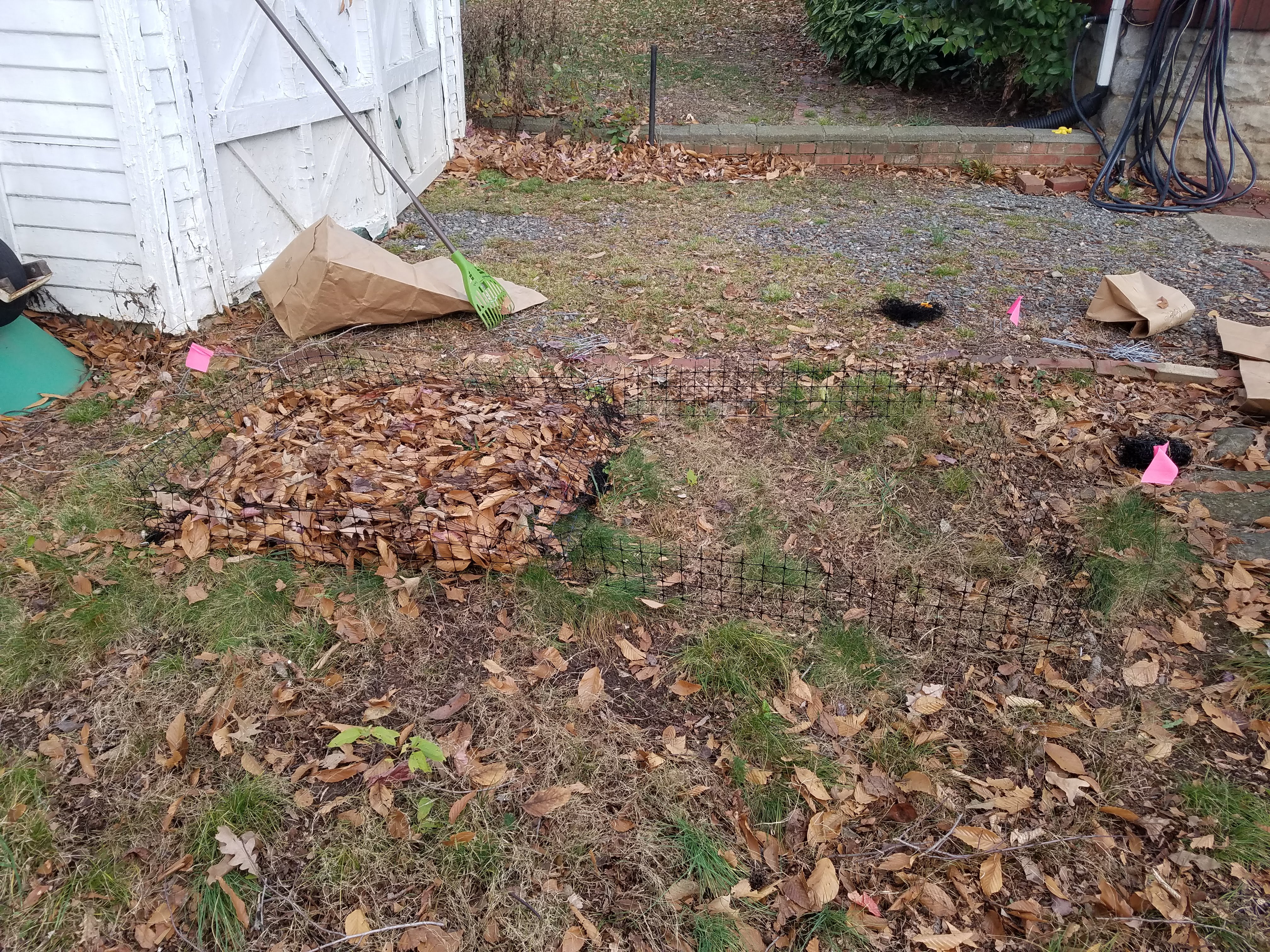How To Preserve Beneficial Hibernating Insects in Your Yard
Research from UMD entomologist Max Ferlauto helps homeowners support the ecosystems thriving in their yards.
Autumn brings crisp temperatures, cozy sweaters and vividly colored leaves rustling under our feet.
But raking the beautiful fallen leaves into paper yard-waste bags can disrupt a delicate ecosystem, according to research conducted by University of Maryland entomology Ph.D. candidate Max Ferlauto.

“Raking fallen leaves could impact the complex ecosystems around your home,” explained Ferlauto, who studies urban ecology in the Burghardt Lab. “Removing leaf litter means killing or disturbing the insects that hibernate on the forest floor, especially the ‘good’ ones that provide beneficial ecological benefits like natural pest control or pollination.”
Ferlauto has been working with 20 homeowners in suburban Maryland for more than two years, studying the general biodiversity of local lawns and the presence of beneficial critters—namely moths, which are important pollinators, and parasitoid wasps, which feed on many garden pests.
In his research, Ferlauto removed or retained autumn leaf litter in residential yards and collected insects emerging from the ground in the spring. He learned that leaf litter removal practices resulted in vast reductions of moth abundance and biodiversity.
Based on those studies, Ferlauto came up with the following list of leaf management do’s and don'ts that can help homeowners limit disturbances to the winter hibernation patterns of insects.
- “Don’t remove and discard all leaf litter in autumn or spring. This will reduce pollinator numbers in your yard.”
Raking leaf litter and bagging it up for disposal reduces moth emergence from winter hibernation by almost half. In areas where leaf litter was removed, Ferlauto also found fewer moth species overall.
- “Do keep some leaves on the ground where you can. Leaves can act as a food source and a ‘blanket’ for insects.”
While many insects make their winter homes in leaf litter, others burrow themselves deeper into the soil under leaves. Ferlauto found that areas where leaf litter was removed had reduced temperature buffering. Keeping litter intact will allow these insects to stay protected from the harsh coldness of winter and variability of spring.
- “Don’t shred or mulch your leaves.”
Ferlauto found that shredding or mulching fallen leaves causes as much damage as gathering leaves up and disposing of them in leaf bags. Placing leaves in compost bags kills the insects on the leaves. Putting leaves and compost through a mulcher or woodchipper also destroys the insects clinging to the leaves.
- “Do retain some leaves and create shallow leaf piles in your yard.”
Creating small pockets of leaves in safe spaces is a great alternative if you can’t leave them where they fall. Homeowners can select which places in their yard to create these shallow piles based on their own preference or their knowledge of areas where beneficial insects like to flock.
Ultimately, Ferlauto hopes homeowners can find a balance between their landscaping needs and ecologically friendly land management practices. With just a few changes in leaf management routines, homeowners can keep their yard presentable while also supporting the health and longevity of natural ecosystems all year round.
“Many of us are already helping our local ecosystems to flourish by planting native wildflowers and other plants in our gardens, attracting ‘good’ insects to our homes,” Ferlauto said. “We still don’t know as much about when they’re in an inactive life stage—hibernation—but we do know that keeping their hibernation homes intact is key to keeping them around longer.”







